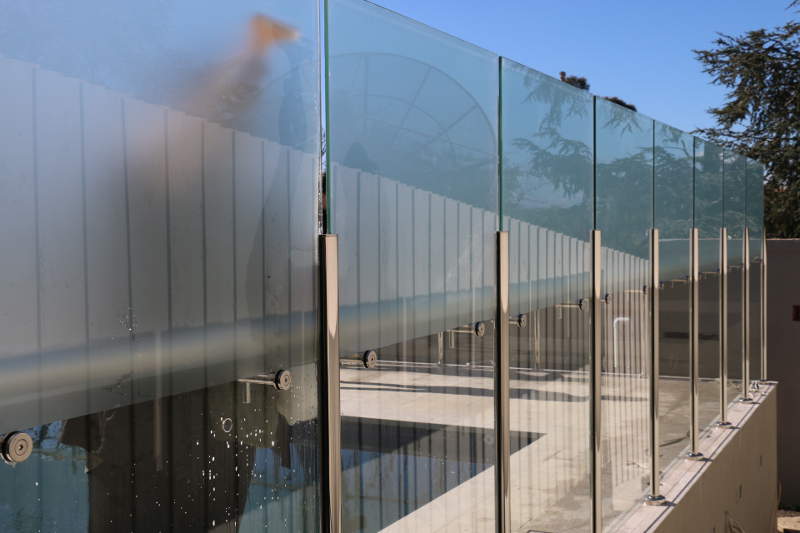Benefits of Privacy Film For Home Windows
Privacy is a top concern for many homeowners, and it’s easy to see why. With more people working from home and spending time indoors, maintaining privacy has become more important than ever. One way to achieve this is by installing privacy film on your home windows. In this article, we will discuss the benefits of privacy film for home windows.
What is Privacy Film for Home Windows?
Privacy film is a type of window film that is applied to the interior or exterior of windows to provide privacy, security, and other benefits. It is made of a thin, adhesive film that can be customized to meet the specific needs of homeowners. Privacy film is available in various styles, colors, and patterns, and it can be used on any type of window.
Benefits of Privacy Film for Home Windows
Increased Privacy and Security
One of the most significant benefits of privacy film for home windows is increased privacy and security. It provides a barrier between your home and the outside world, making it difficult for people to see inside. This is especially useful for ground-level windows or those facing busy streets. Privacy film also prevents burglars from seeing into your home, reducing the risk of theft and break-ins.
Enhanced Aesthetic Appeal
Privacy film can enhance the aesthetic appeal of your home by adding a decorative element to your windows. It is available in various designs, including frosted, etched, and patterned styles. This allows you to customize the look of your windows to match your home’s interior design or exterior architecture. Privacy film can also be used to create a focal point or add visual interest to an otherwise bland window.
Energy Efficiency and UV Protection
Privacy film can also help make your home more energy-efficient by reducing the amount of heat that enters or leaves your home. This is particularly useful during the hot summer months when your air conditioner is working overtime. Privacy film also blocks harmful UV rays, protecting your furniture, flooring, and other valuables from fading and sun damage.
Reduced Glare and Increased Comfort
Privacy film can also reduce glare on your computer or television screen, making it easier to work or relax indoors. It can also increase your overall comfort by reducing the amount of heat that enters your home, creating a more comfortable living environment.
Types of Privacy Film for Home Windows
There are several types of privacy film available for home windows. The most common types are:
Frosted or Opaque Film
Frosted or opaque film is a popular choice for bathrooms, bedrooms, and other areas where privacy is a top concern. The privacy film allows natural light to enter the room while offering complete privacy, ensuring that you can enjoy both natural light and privacy at the same time.
Reflective Film
Reflective film is another popular option for home windows. It reflects the sun’s rays, reducing heat and glare. Reflective film also provides privacy by making it difficult for people to see inside your home.
Tinted Film
Tinted film is a type of privacy film that also reduces the amount of light that enters your home. It is available in various shades, from light to dark, and can be customized to meet your specific needs. Tinted film is particularly useful for rooms that get a lot of sun exposure, as it can help reduce glare and heat.
Factors to Consider When Choosing Privacy Film for Home Windows
When choosing privacy film for your home windows, there are several factors you should consider:
The Level of Privacy You Need
The level of privacy you need will depend on the location of your windows and your personal preferences. If your windows face a busy street or your neighbors’ homes, you may need a more opaque film. However, if you simply want to add a decorative element to your windows, a frosted or etched film may be sufficient.
Your Home’s Aesthetic Style
Privacy film comes in a variety of styles and patterns, so it’s important to choose one that matches your home’s aesthetic style. If you have a modern home, a reflective or tinted film may be more appropriate. On the other hand, if you have a traditional home, a frosted or patterned film may be a better fit.
The Amount of Natural Light You Want
Privacy film can reduce the amount of natural light that enters your home, so it’s important to consider how much light you want in each room. If you have a dark room that needs more natural light, a lighter tinted film may be a good option.
Your Budget
Privacy film is available at various price points, so it’s important to consider your budget when choosing a film. While a more expensive film may provide additional benefits, such as increased energy efficiency, a more budget-friendly option may still provide the privacy you need.
How to Install Privacy Film for Home Windows
Homeowners who possess basic DIY skills can easily undertake the process of installing privacy film as it is a simple and uncomplicated task. Here are the basic steps:
- Clean the window thoroughly with soap and water, then dry it with a lint-free cloth.
- Measure the window and cut the film to size, leaving an extra inch or two on each side.
- Peel the backing off the film and spray the adhesive side with a solution of water and soap.
- Carefully apply the film to the window, smoothing out any bubbles or wrinkles with a squeegee or credit card.
- Use a sharp knife or scissors to cut off any additional or unnecessary privacy film from the edges of the window.
Maintenance and Cleaning of Privacy Film for Home Windows
Privacy film requires minimal maintenance and can be cleaned with a soft, lint-free cloth and a solution of mild soap and water. Avoid using abrasive cleaners or rough cloths that could scratch the film. It’s also important to avoid using razor blades or other sharp objects to remove any stubborn stains, as this could damage the film.
Frequently Asked Questions (FAQs)
- Can privacy film be removed from windows?
Answer: Yes, privacy film can be removed from windows with some effort. Simply peel the film off slowly, and use a solution of water and soap to remove any adhesive residue.
- Is privacy film energy-efficient?
Answer: Yes, privacy film can help make your home more energy-efficient by reducing the amount of heat that enters or leaves your home.
- Can privacy film be used on all types of windows?
Answer: Yes, privacy film can be used on all types of windows, including double-pane windows.
- How long does a privacy film last?
Answer: Privacy film can last up to 10 years with proper installation and care.
- Can privacy film be installed on the outside of windows?
Answer: Yes, privacy film can be installed on the outside of windows, but it may be more vulnerable to damage from weather and other external factors.
Conclusion
Privacy film for home windows is a versatile and practical solution that can provide both privacy and style to your living space. With various types of privacy films available, you can choose the one that fits your needs and preferences. Tinted film, for instance, can not only offer privacy but also reduce the amount of heat and glare entering your home.
When choosing a privacy film, it’s important to consider factors such as the level of privacy you need, your home’s aesthetic style, the amount of natural light you want, and your budget. Once you have selected the right film, installing it is a relatively easy process that can be done by homeowners with some DIY experience.
To ensure that your privacy film lasts for as long as possible, proper maintenance is necessary. Cleaning the film regularly with a soft cloth and mild soap and water can keep it looking great and performing well for many years.
Overall, privacy film for home windows is a smart investment that can provide benefits such as added privacy, increased energy efficiency, and a stylish appearance.




